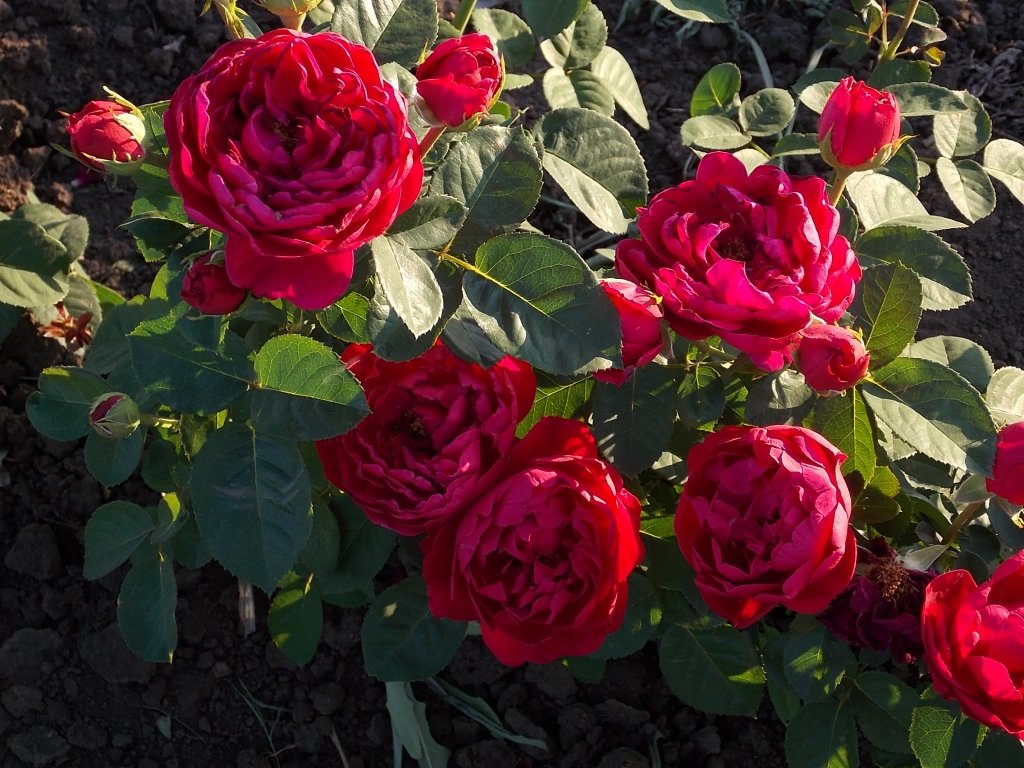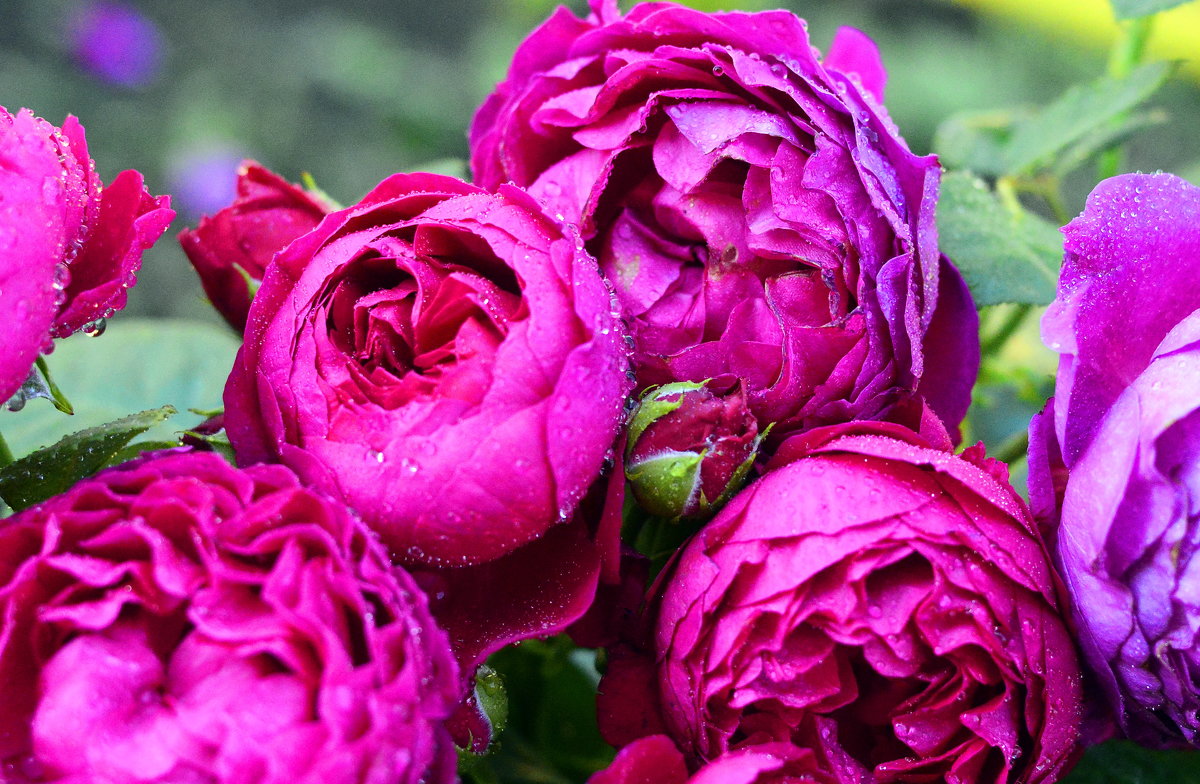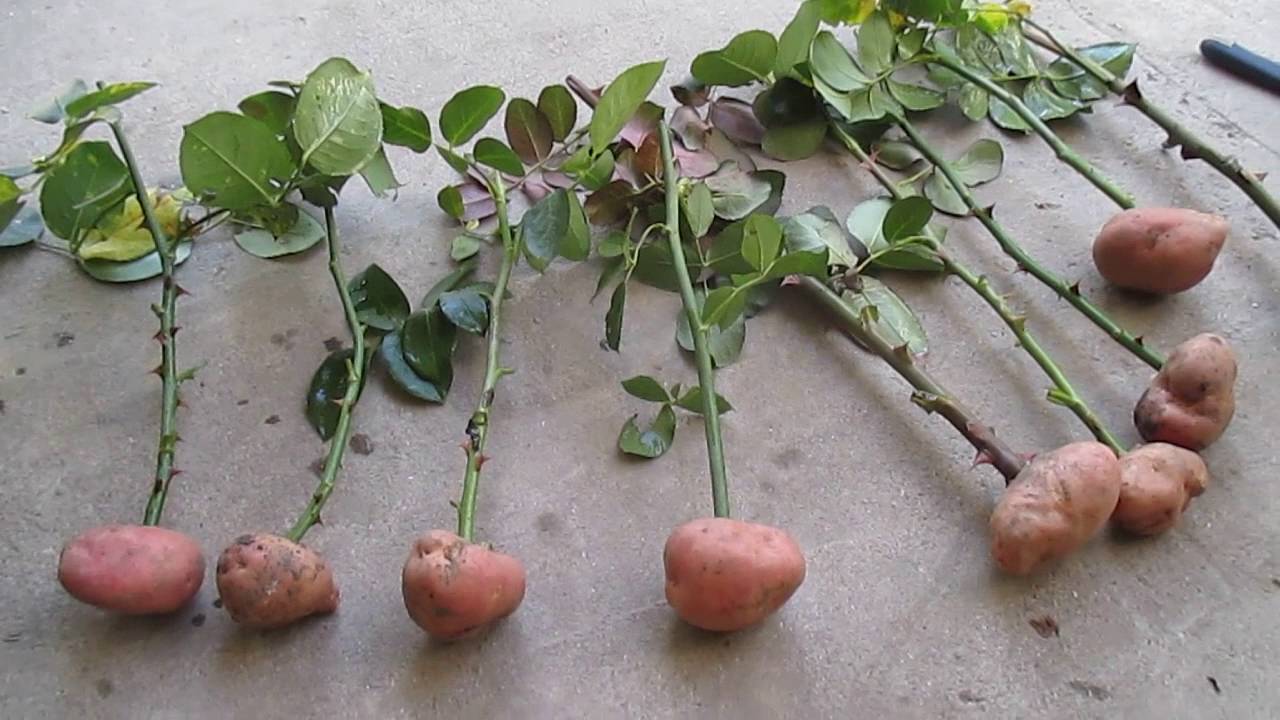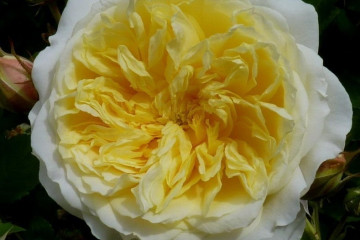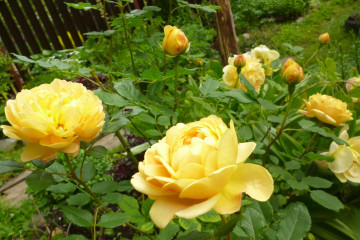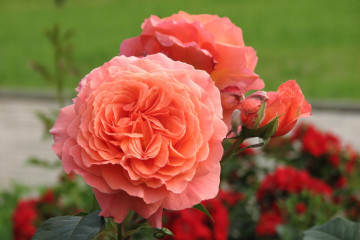Rose Ascot (Ascot) - what kind, characteristics
Content:
Roses are one of the most popular flowers among gardeners. Lush and at the same time delicate inflorescences, attractive aromas, noble shades make them a real decoration of a flower garden. They are especially fond of among professional florists and among lovers of the variety of bright colors. One of them is the Ascot rose with rich cherry flowers.
Rose Ascot (Ascot) - what kind of variety, history of creation
The Ascot variety was bred in Germany, at the beginning of the 21st century, by the breeder Hans Evers. These roses were spread thanks to the promotion of the Rosen Tantau nursery. Among experienced florists, rose seedlings brought from Germany are especially appreciated.
Brief description, characteristic
To understand the features of this beautiful rose, a description of its type and features of flowering will help.
This flower really grows in the form of a shrub, the shoots reach a height of 80-120 cm, and grow up to half a meter in width. The branches are dense and tough, growing from one bush to about the same height. The buds, like all tea hybrids, open at the top of the bush.
Flowers of the Ascot variety are painted in a dark shade of cherry, wine, with a slight tint of purple. They have a nostalgic cup-shaped shape, the petals are folded into double, densely stuffed buds, reminiscent of peony flowers.
The aroma of this variety can be heard only by smelling the inflorescences themselves - it is very sweet, heavy. The smell can spread over a small area only if several Ascot rose bushes are planted nearby.
Advantages and disadvantages of the variety
The main plus in choosing this variety of roses is their spectacular appearance. The buds open rather slowly, the bush is strewn with them throughout the entire flowering period.
In addition, Ascot roses have the following benefits:
- tolerate wintering well in middle latitudes;
- resistant to various diseases and pests;
- in addition to many flowers, they have a good foliage density;
- the branches are not very prickly.
Use in landscape design
Most often, the Ascot rose is planted in rose gardens with other hybrids of delicate pink, purple tones. An excellent combination is obtained with white roses, various flowers of simple bud structure.
This variety looks good, planted along garden paths, around gazebos, in front of the veranda of the house. In order for the bushes to look magnificent and noble, the lawn around them must be perfectly cut.
Growing a flower, how to plant it in open ground
The principles of growing this flower are exactly the same as those of other hybrid tea varieties of roses, with the exception of some nuances in choosing a successful choice of a landing site.
In what form is the landing
To grow a rose in the garden, you can use the seeds of the desired variety or already grown seedlings.
In the first case, the process will last longer, but the plant will turn out to be healthier and more hardy, provided that the seed material is purchased of high quality. This method is most often used by more experienced florists and flower breeders.
Planting seedlings is much easier, it is easier to buy them, and the flowering of the bush will come the next season.
What time is the boarding
The optimal time for planting seedlings in open ground is spring. In 6-8 months, the rose will have time to take root, gain vital juices, and calmly survive the winter. At the same time, it is better to limit the flowering of the bush in order to direct its forces towards rooting and growth.
Location selection
Rosa Ascot prefers nutritious, fairly light and well-drained soil. The place for planting it should be well lit, but one where direct sunlight will not "burn" the delicate petals of the plant. It is important to ensure that there are no drafts on the site.
How to prepare the soil and flower for planting
Before planting, the seedlings are placed in damp sand and left in a cool room for 12-16 hours. The roots are cut a couple of centimeters.
The hole should be 40-60 cm wide and + 15 cm deep according to the calculation of the root length. The soil in the hole is pre-fertilized. A mixture of sand, rotted manure and a small amount of nitroammophoska is suitable for this.
Planting procedure step by step
Planting a rose bush yourself is not difficult. After preparing the seedling itself and the planting pit, you need to proceed as follows:
- The landing pit is well spilled with water;
- The substrate remaining after digging is mixed with compost and wood ash;
- The seedling is lowered into the hole at a level above (4-5 cm) of the grafting site;
- The substrate is carefully poured into the free space, slightly crushed;
- A furrow is dug along the perimeter of the landing site;
- The bush is watered.
Plant care
Ascot hybrid tea rose is not too whimsical to care for. It is important to observe the regime of watering and feeding, as well as to prevent pests and diseases.
Watering rules and humidity
Watering is carried out 1-2 times a week, depending on the air temperature. It is important that the moisture reaches up to 25 cm deep into the soil. This will allow the roots to go deeper and not be damaged by periodic loosening.
Mulching with organic fertilizers around 7-10 cm is necessary in the first months after planting. This will better retain moisture in the soil.
Top dressing and soil quality
After planting and the very first feeding, fertilizers need to be applied at intervals of once a month. For this, the following are suitable:
- special fertilizers for roses;
- fermented chicken manure concentrate diluted in a ratio of 1 liter of concentrate to 10 liters of water.
Top dressing is not applied after mid-summer, as the plant must prepare for the dormant period. Watering at this time is reduced.
Pruning and replanting
Pruning is paramount to the successful growth and flowering of the rose bush. In the spring, before flowering, it must be cut to form a neat shape.
In summer, it is important to cut off wilted buds infected with diseases or weak shoots and leaves in time. In the fall, after flowering, you need to cut off all damaged and wilted shoots - this is how the bush prepares for wintering. Each cut is processed with a garden pitch.
A rose can be transplanted in the autumn, after the sap flow in the plant has stopped, at a temperature of +10 ° C and below.
Features of wintering a flower
This variety is quite frost-hardy, but in regions with harsh winters, it is better to cover bushes for wintering. Before the cold weather, nitroammophoska crumbles around the base of the bush, then the bush is buried in.
Blooming rose
The Ascot tea rose blooms magnificently, brightly, with large inflorescences. During this period, it is important to carefully follow the recommendations for plant care.
A period of activity and rest
Flowering lasts from June to October, in several waves. Depending on the region and the quality of care, the bush can bloom up to three times in one season. The dormant period begins immediately after the last buds have faded, that is, from mid-autumn.
Care during and after flowering
The main care during the flowering of the Ascot rose is its regular watering, pruning of wilted inflorescences and branches, as well as timely fertilization. We must not forget about checking the plant for the presence of diseases and pests, and also eliminate these problems in time.
What to do if it does not bloom, possible reasons
The lack of flowering of Ascot rose can be associated with several reasons. For example:
- the plant is planted only the first year;
- unsuccessful planting site - it is worth paying attention to the factors necessary for this variety, such as lighting, soil fertility, lack of wind;
- spring pruning by more than half;
- care errors - incorrect watering regime or the introduction of inappropriate fertilizers;
- the presence of weeds around the bush;
- bacterial burn on the stems, formed after wintering (such branches must be cut off immediately);
- aging of the plant - woody branches, from the age of three years, need to be cut off.
A careful analysis of the plant according to the above list will help identify one or more problems due to which the rose does not bloom. Eliminating these problems will bring the flower to life.
Flower propagation
To get several new ones from one bush, you can use the vegetative method of propagating roses. To carry out the procedure correctly, it is important to follow the recommendations of experienced florists.
When breeding is done
The cut of shoots for grafting is done immediately after the end of the flowering of the shrub, that is, from the end of summer to autumn. The planting of seedlings that have taken root begins in spring. Reproduction by layering and dividing the bush is carried out in the spring, before the growing season.
Detailed description
The most popular and easiest way, even for beginners, to propagate the Ascot rose is by rooting cuttings using potatoes.
The process is as follows:
- At the right time, young and strong shoots with several nodules are cut off.
- In a sufficiently illuminated area, a trench is dug about 15 cm deep.
- The groove is covered with cleaned sand by a third.
- Cuttings are placed in potato tubers about 10-12 cm.
- Tubers with cuttings sticking up are placed in the groove.
- The cuttings are covered with a mini-greenhouse on top.
It is important to water the cuttings with sugar syrup once a week, periodically ventilate the greenhouse. After about a month, you can start hardening future seedlings.
Diseases, pests and ways to control them
The Ascot variety is quite resistant to various diseases and pests.But with improper or untimely care, roses can damage:
- Powdery mildew - a solution of baking soda (40 g per 1 liter of water), sprayed at intervals 2 times a week for a month, will help to cope with it.
- Green aphid - a solution of 1 piece of laundry soap with boiled and infused wormwood in 10 liters of water effectively fights against this insect. The stems and leaves of the plant are treated with "medicine" once a week until the pest disappears.
In specialized stores, you can find different types of products used to prevent diseases and pests in roses.
Ascot roses can be a wonderful and fragrant decoration of the garden if they are taken care of on time and correctly. Royal lush and large flowers, even when cut in a vase, will smell and fill the house or apartment with bright shades.

